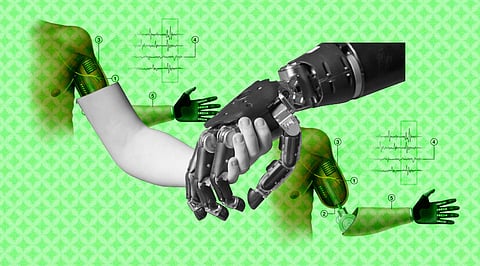
- Insights
- Cryptocurrencies
- Stocks
- White Papers
- Industry
- Geography
- Insights
- Cryptocurrencies
- Stocks
- White Papers
- Industry
- Geography


In medicine, a prosthesis, or a prosthetic implant, is an artificial device that replaces a missing body part, which may be lost through trauma, disease, or a condition present at birth. A pioneering project to develop advanced pressure sensors for use in robotic systems could transform prosthetics and robotic limbs. The innovative research project aspires to develop sensors that provide enhanced capabilities to robots, helping improve their motor skills and dexterity, through the use of highly accurate pressure sensors that provide haptic feedback and distributed touch.
It is led by the University of the West of Scotland (UWS), Integrated Graphene Ltd, and supported by the Scottish Research Partnership in Engineering (SRPe) and the National Manufacturing Institute for Scotland (NMIS) Industry Doctorate Programme in Advanced Manufacturing. This is not for the first time when the team of highly talented researchers have decided to bring the much needed transformative change in prosthetics and robotic limbs.
The human brain relies on a constant stream of tactile information to carry out basic tasks, like holding a cup of coffee. Yet some of the most advanced motorized limbs — including those controlled solely by a person's thoughts — don't provide this sort of feedback. As a result, even state-of-the-art prosthetics can often frustrate their users.
Fisher is one of more than 80 scientists, staff and trainees at the university's Rehab Neural Engineering Labs who is working to add the sensation of touch to prosthetics. The goal is to equip artificial hands and feet with sensors that are linked to a person's own nervous system.
Thanks to the work of scientists at Johns Hopkins University, a partially paralyzed man was able to feed himself using just his mind and a pair of robotic arms. The 49-year-old man suffered from a spinal injury nearly thirty years ago, leaving him with limited upper body mobility and an inability to use any of his fingers. Now, with the help of an advanced brain-machine interface, the man can command robotic prosthetic arms to cut and feed him food simply by making subtle movements with his wrists and hands in response to audio prompts such as "select cut location" or "moving food to fork".
